Last week, EuropeOn held an online event to unveil and present its latest report on ‘Business Opportunities Since Covid-19’. EuropeOn’s event included a presentation by Tore Strandskog from EuropeOn’s Norwegian member Nelfo, on the opportunities in the electrification of transport.
This past year has been very different from what anyone could have imagined. From Nelfo’s perspective, as an industry organisation, we must fight COVID-19 with policies and instruments helping profitable companies to survive – and adapt to new possibilities.
Even though COVID-19 has changed a lot, the need for a green transition is as urgent as ever. The long-term goals of our policy work have therefore been maintained, and we have strongly encouraged our politicians to be bold and to reinforce the goals and means of green transition throughout our economy.
Electrical contractors are the catalysts, we make green transition happen, as we empower consumers with solutions, combining digitalisation and electrification.
Let’s take this opportunity to highlight possibilities in electrification of transport.
In addition to the electrification of passenger cars, there is a shift towards electrification of heavier vehicles, machinery at construction sites and in all kind of maritime operations close to the coast. We see the shift in aviation as well, which was unthinkable some years ago.
The future of transport is electric.
I’m going to dig into a few figures and initiatives – to show how markets and politics work together for bringing success.
In Norway, we have the good fortune of having politicians who support zero-emission vehicles. We have had a substantial set of incentives to accelerate the transition, going back to the early nineties and still in place today. The Norwegian Parliament has set a national target of zero emissions for all new cars sold by 2025.
And by the end of the Covid-year 2020, we ended with a record 54 % of all new cars sold in 2020 being purely battery electric. If we include battery hybrid vehicles, more than 8 of 10 new vehicles sold in 2020 came with batteries.
In January 2021, more than 330.000 battery electric cars are on the road in Norway. Earlier concerns that the power grid will go black have been proven wrong.
Actually, our power grid handles this very well, thanks to our members, electrical contractors, installing smart technology for charging and distributing loads based on price signals. Electric cars enable a better utilisation of the grid, by using each of the 24 hours in a day for charging.
Regulations are also an important area.
In 2020, we got a new law amended allowing tenants in multi-dwelling homes to install charging stations for their electric cars. – We call it, “the right to plug”.
We are confident this will boost demand for charging infrastructure over the next years. This entails valuable business for our members, while helping homeowners and tenants achieve climate-friendly transportation.
We also work to ensure all new buildings are ready for charging. Nelfo launched the “ready-to-charge-buildings” concept and won a parliamentary majority to demand that this be incorporated into building regulations.
And our government is consulting on a proposal for changes in the regulations ensuring all new buildings with space for parking must facilitate electric car charging.
With this, more people will be stimulated to choose an electric car. This is good for the climate and good for our members’ affairs.
My final point is that passenger cars represent less than 1/3 of the CO2 emissions of the entire transportation sector. As I said earlier, we welcome a broad range of transport electrification. And this is happening these days, too.
Nelfo members have worked on a battery electric ship transporting 400 tourists in the fjords of Norway. The ship does not emit to air or the sea when operating the most vulnerable part of our country. After a tour it takes around an hour on the dock to recharge the batteries.
Maritime electrification does not only apply to passenger ships. Actually, by 2022 over 80 new car ferries with either pure battery power or hybrid technology will operate in Norwegian fjords.
There is a lot of electrical work in the construction of these ships, and to prepare shore power and charging infrastructure along the coast.
These examples show that transport electrification is bringing new demand for charging infrastructure – and hence more jobs for our members.
A considerable number of jobs, and just what we need after Covid-19.
